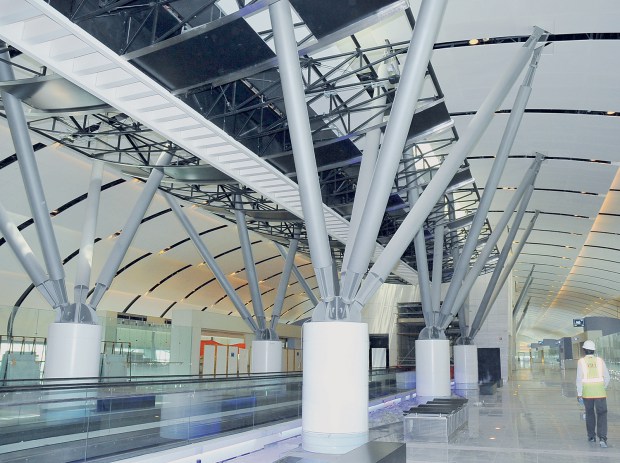

Muscat Dec 9 - The new Muscat Airport will bring greater dynamism to the aviation market in the region, said top airline officials at the Arab Aviation Summit in Dubai. It was mentioned the share of the airline business in the region has increased from four per cent in 2006 to nearly 22 per cent in 2016.
According to Abdul Wahab Teffaha, Secretary-General, Arab Air Carriers Organization (AACO), the growth of the regional airlines declined from 11 per cent to around six per cent this year for political, economic and other factors such as a ban on laptops.”
He said Oman is an attractive place with great potential. GCC countries continue to be the engine of growth in the Arab market.
Nearly 13 million passengers used (arrival, departure and transit) used Muscat and Salalah airports as of the end of October 2017, a 17 per cent increase from the same period last year. Teffaha said the growth of low-cost carriers has been not at the cost of legacy airlines as there is enough space for both types of airlines.
Adel al Ali, Group CEO, Air Arabia, said the performance of Sohar airport has been surprising despite the short duration of flights between Suhar and Sharjah. He added, “We have been operating from Oman for the past 14 years.
Once the new Muscat Airport is ready, it will bring new dynamism to the aviation market.
There is an open sky policy between UAE and Oman and the airlines from both sides will add frequencies and capacity as per the demand.”
Ghaith al Ghaith, CEO of Flydubai, said, “Oman market has been one of our successful stories with multiple frequencies to two destinations in the country.
The new Muscat airport will help us as there is some pressure on operations from the current side.
We are looking at the Sohar airport as there is some potential on that side, but no plans for now.”
According to Airbus’ Global Market Forecast, released this year, the fleet size of operators in the Middle East is expected to more than double from 1,250 to 3,320 aircraft in the next two decades.
By 2036, there will be 95 mega-cities catering to 98 per cent of the world’s long haul services.
The five mega cities existing today in the Middle East will more than double to 11 in the next 20 years.
The summit was inaugurated by Sheikh Ahmed bin Saeed al Maktoum, president of the Dubai Civil Aviation Authority, chairman and chief executive, Emirates Airline.
According to IATA, the Middle East’s aviation market is forecast to grow five per cent annually until 2036.
Predictions indicate the sector will witness an additional 322 million passengers a year on routes to, from and within the region and the total market size will expand to 517 million passengers during this period.
Vinod Nair
Oman Observer is now on the WhatsApp channel. Click here



